
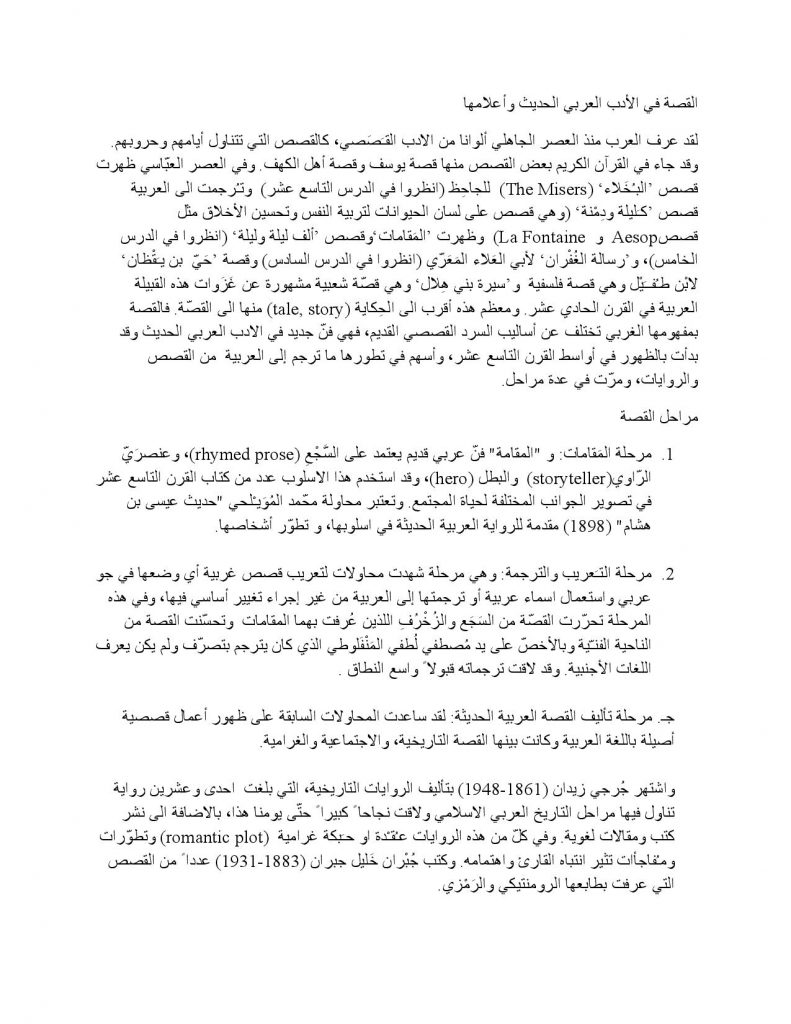



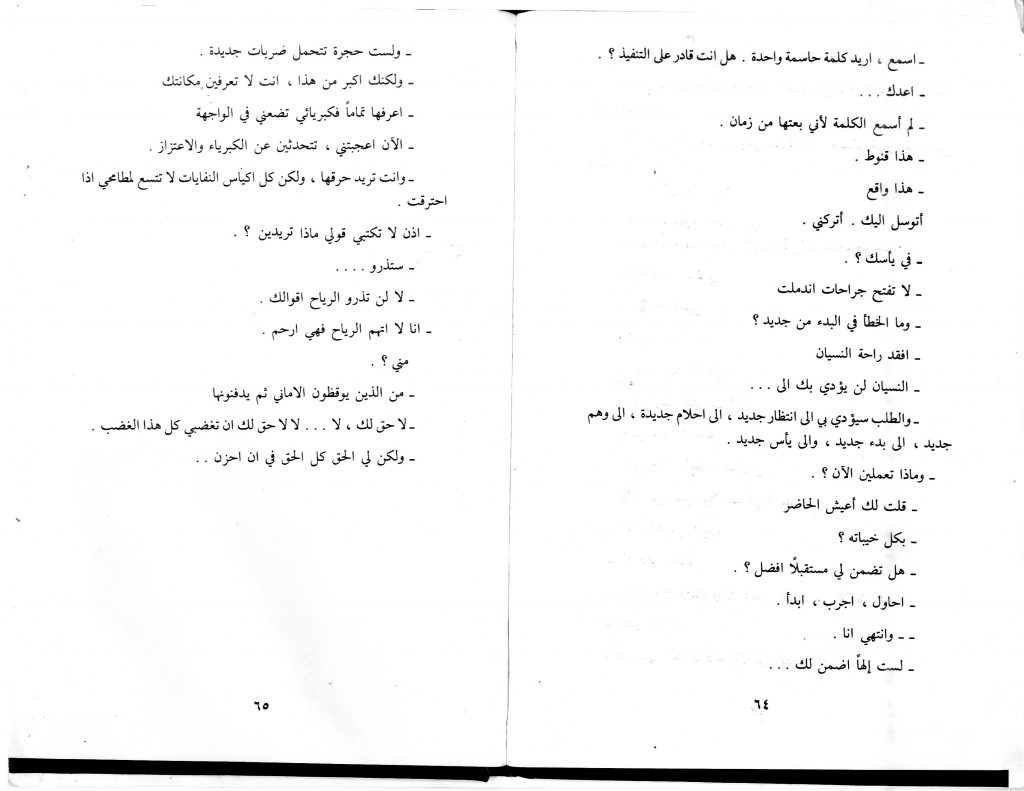
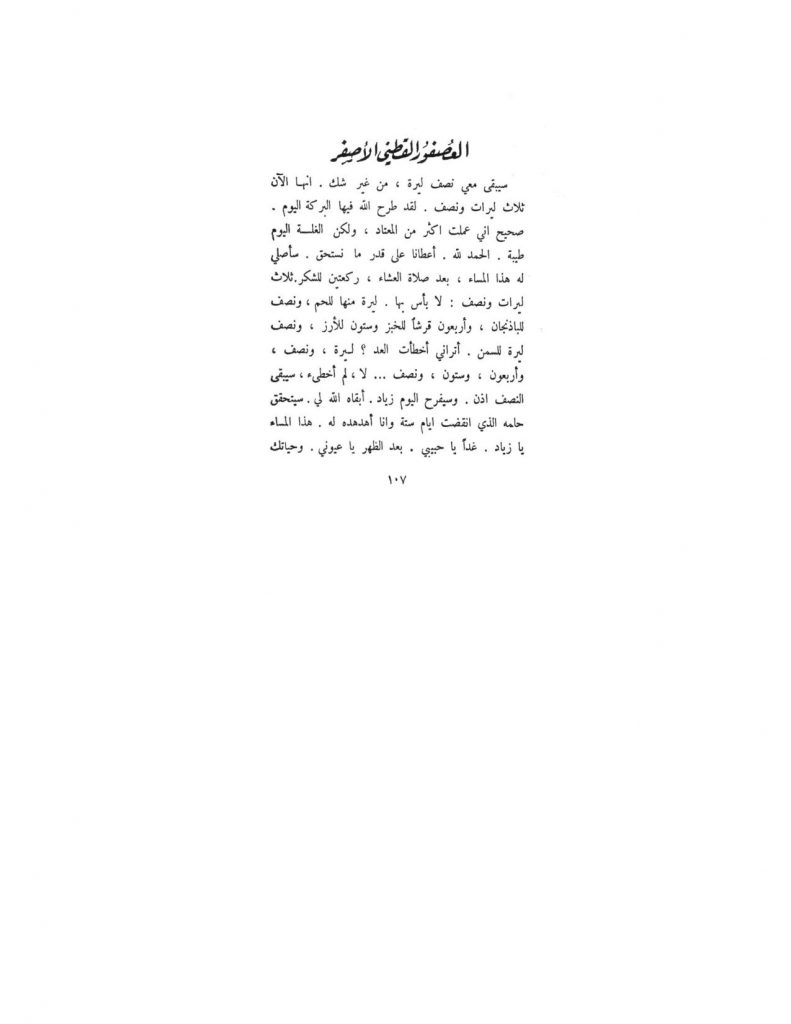
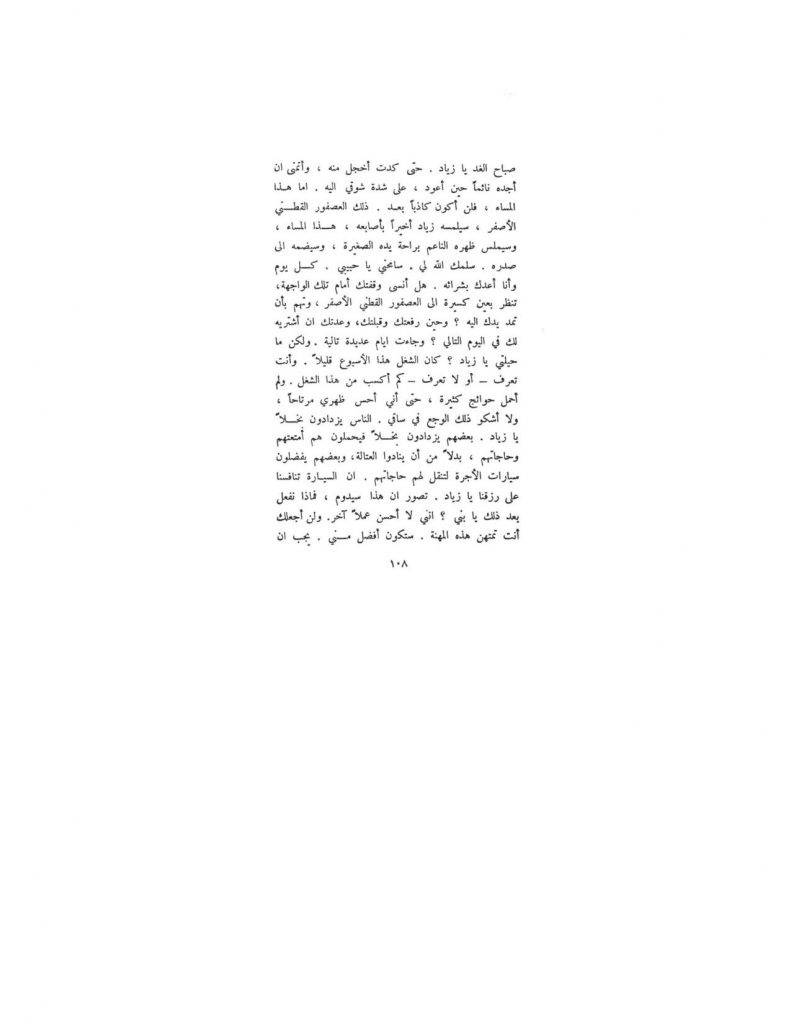


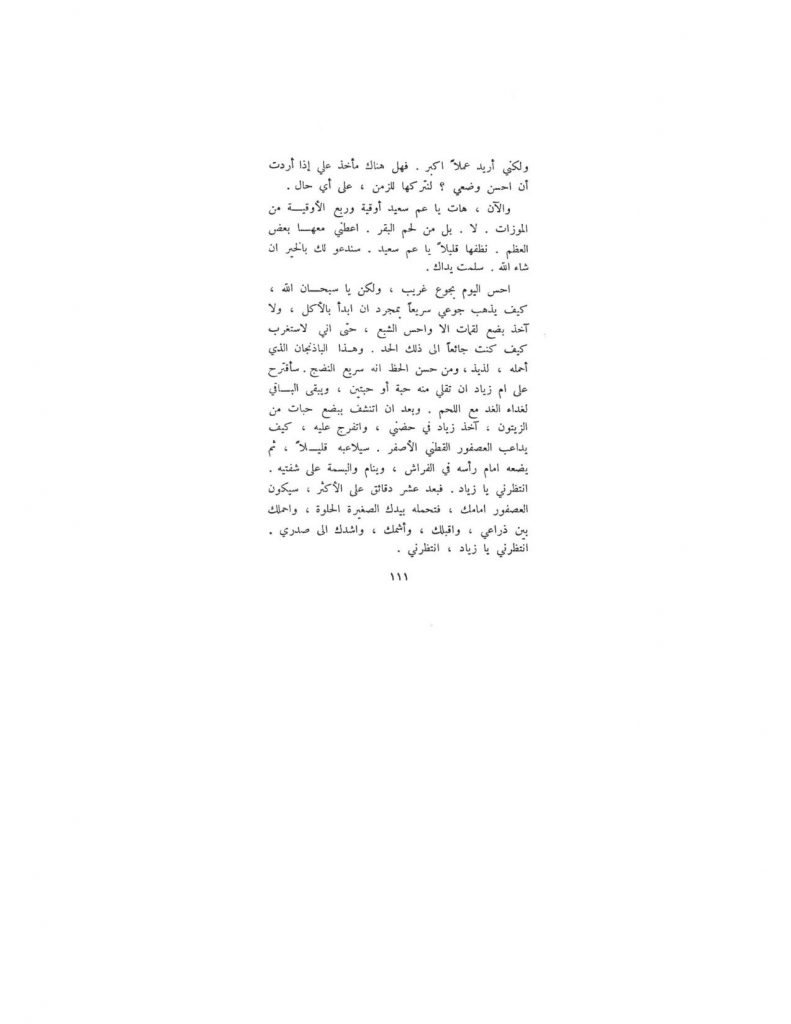

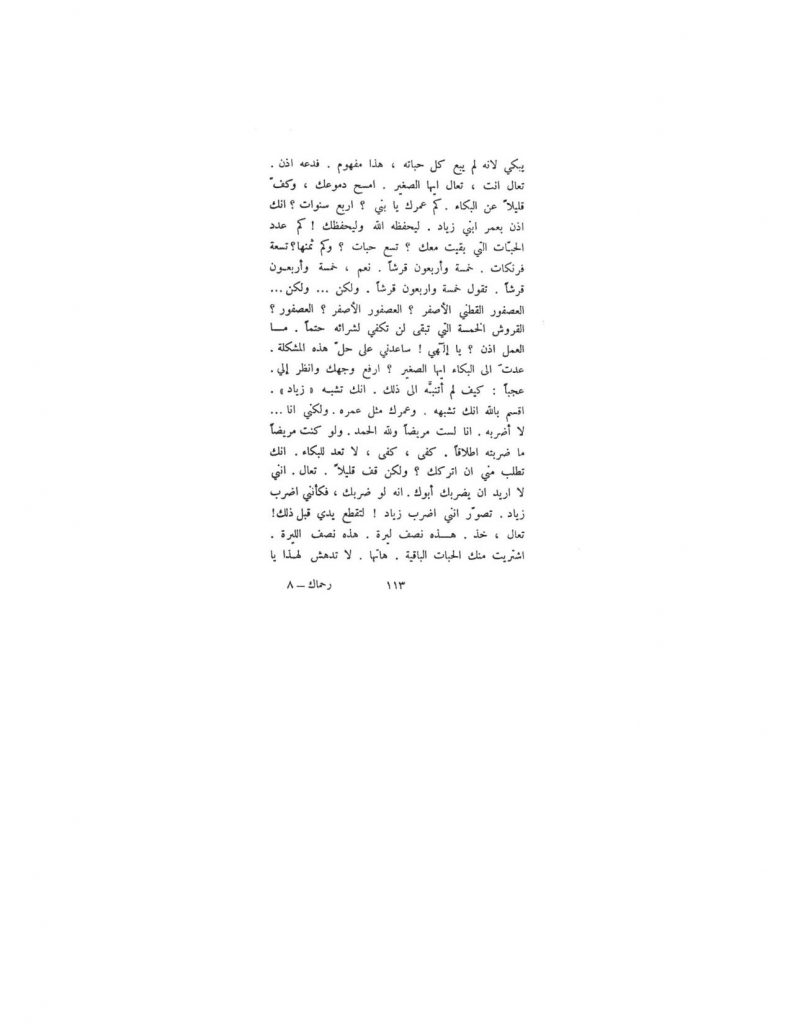


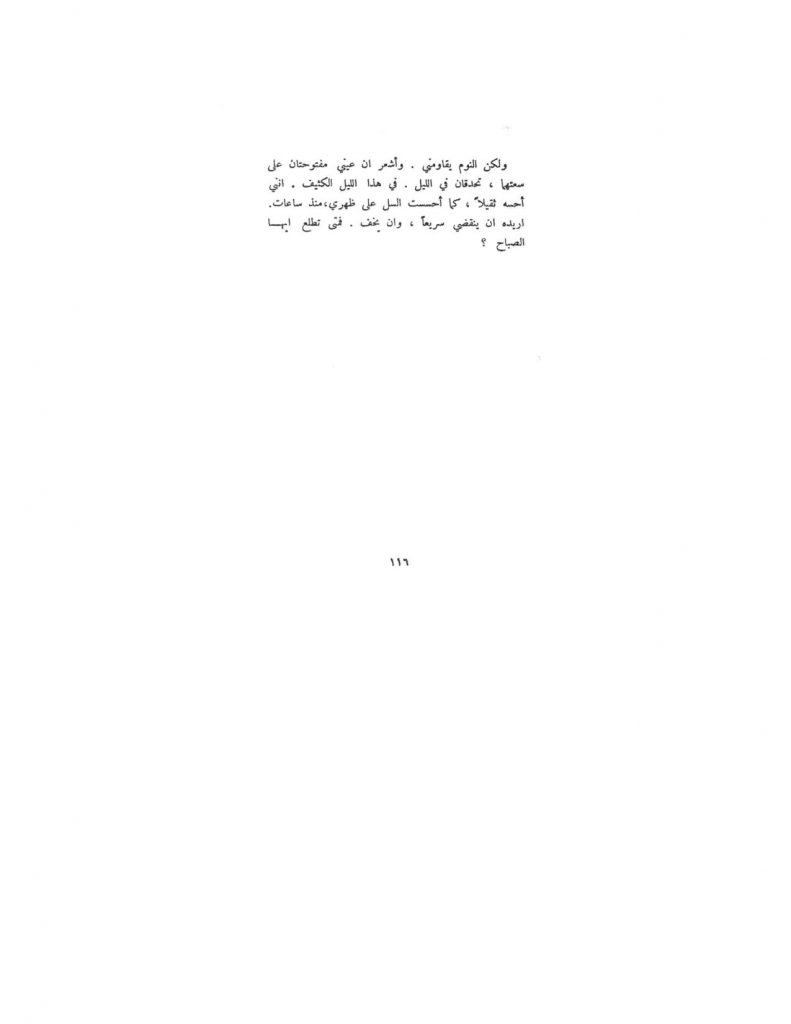
:. اسئلة مباشِرة وغير مباشِرة ‘Direct and Indirect Questions’
As you well know, questions may be direct or indirect. The basic differences between them is that the former is a direct quotation of what one tells an addressee and is an independent unit, whereas the latter is a reported form of language and is an inseparable part of a sentence. The Basic Text in this lesson contains a number of instances where questions are asked and whose nature, at least to a speaker of English, is not clear. Thus, it is important to ask what the differences are between direct and indirect questions in Arabic, what differences there are between English and Arabic in this respect, and how one forms indirect questions in Arabic.
Direct and indirect questions in English differ with regard to tense of the verb, order of words, and in written English, punctuation, where direct questions usually follow a colon or a comma and are between inverted commas. No such differences exist in Arabic: the question is merely attached to the main sentence and punctuation is erratic and inconsistent, to the point of breaking up a complete sentence, as can be readily seen in the Basic Text, which is reproduced here mostly as is, to be as close to ‘authentic’ as possible.
In Arabic one can tell for sure that the question is direct when it contains ضمير المخاطب ‘second person pronoun’, but that’s it. Thus,
سأله الطبيب اين معدتك can only mean ‘The doctor asked him: “Where is your stomach”, whereas سألني الطبيب اين معدتي could mean ‘The doctor asked me where my (or the doctor’s) stomach was’. The use of the proper punctuation would of course disambiguate the issue, but to tell the difference one would have to rely on the context.
How does one form indirect questions in Arabic?
There are basically two types of question words that we have to deal with: one requires a yes-or-no answer (and these are ( ا ، هل , and the other, typically ‘who, what where, why and how’, cannot be answered with a yes or no, but requires some statement in response. In Arabic, the verb determines what type and kind of question follow it (for example ذكر ‘remember’ may not be followed by a yes-or-no question, but لا يذكر ‘he does not remember’ can; similarly ذكر ‘mention’ may not be followed by a yes-or-no question but لا يذكر/لم يذكر ‘he does not/did not remember’ can) and what changes, if any, need to be made in the question. In general the following verbs are followed by a direct or indirect question: سأله ‘to ask s.o., inquire from s.o.’ and تساءل ‘to wonder, ask oneself’, عرف ‘know’ , علم ‘know’, ذكر ‘remember’, فهم ‘understand’, درى ‘know, come to know’,أخبره ‘inform, tell s.o.’, and others. Here are examples:
سألني لماذا ادرس العربية؟ He asked me why I studied Arabic.
بدأت اتساءل هل من حل ّ لهذه المشكلة؟ I began to wonder whether there could be any solution to the problem.
سألوني ايّـُهما أفْضَل؟ They asked me which of the two was better.
سألوني ايّـَهما أفَضِّل؟ They asked me which of the two I preferred.
لا اعرف ماذا حصل I do not know what happened.
لم نفهم لماذا يتصرّفون بهذا الشكل We did not understand why they behaved in this way.
اذكرتماماً كيف وصلن الى هذه النتيجة I remember very well how they reached this conclusion.
لست ادري من اين جئت ولا الى اين امضي I do not know where I came from and where I am going.
As can be seen there is a question mark even in indirect questions, and there are no changes in the question when following these verbs, whether it is a yes-or-no question or not; also, there seems to be less and less restrictions on the use of both kinds of questions with all verbs, most probably under the influence of Western languages. However, two points need to be made:
1. Arabic does have other means of embedding yes-or-no questions, i.e. making them indirect questions:
a. adding an alternative question with the coordinator أمْ ‘or’ and even أو ‘or’; the alternative question may also be the implied sentential word لا ‘or not?’. Thus,
لم يعد يعرف هل يضحك أمْ يبكي؟ He no longer knew whether to laugh or to cry.
لست أدري أأنت معنا أمْ علينا؟ I do not know whether you are for us or against us.
أخبرني هل تزوّجت كريمة أمْ لا؟ Tell me whether you married Karima or not.
b. using the conditional particles إذا (as was noted in Grammar 2 above) or إنْ with the meaning of ‘whether’. Thus,
لا اذكر إن كان قد مات ام لا/ام قد اختفى. I do not remember whether he died or not/whether he died or disappeared.
سألتها اذا كان عندها وقت للراحة والاستجمام. I asked her whether she had time for …
أجابت انّها لا تعرف اذا كان هذا ممكناً لإمرأة مثلها. She responded that she did not know whether that was possible for a woman like her.
2. What happens when the question is preceded by a preposition?
a. The question words are other than yes-or-no. These are of two kinds:
1) The interrogative pronouns مَن ‘who’, ما ‘what (thing)’, أيّ ‘which one(s)’, and كم ‘how many’. With these, no changes in the question take place. In the case of منْ and ما , the combined form of these and the preposition that we find in questions is used, except that the full form of ما is used in embedded questions. Thus,
لا اعرف من أيِّ مدينة هو I do not know which town they are from.
سألته بكم سيارته I asked him how much his car was for.
لا أدري عمّا يتحدّثون I do not know what they are talking about.
2) The other (non yes-no) question words. Here the situation varies:
أين can be used with مِن and الى only
متى can be used withالى and مُنْذُ
ماذا can be used with بِ، مِنن عن، الى، على، في، لِ , though it is considered more correct to use the pronominal form ما.
لماذا and كيف cannot be used after a preposition. In embedded situations, the nouns السبب ، الغرض، الهدف ‘reason, purpose, goal’ and كيفيّة ‘manner’ , respectively, can be used.
لم يخبرني لماذا ترك الجامعة He did not inform me why he quit the university.
لم يخبرني عن سبب تركه الجامعة He did not tell me the reason why he quit the university.
b. The question is yes-or-no.
Here the conditional particle اذا is used preceded by ما
افكّر فيما اذا كنت استطيع ان أفعل ذلك I am thinking over whether I can do that.
أخبرْني عمّا اذا كنت في بيروت حينئذٍ Tell me whether you were in Beirut at the time.
1. The verbs سأله ‘to ask s.o., inquire from s.o.’ and تساءل ‘to wonder, ask oneself’, take questions of all kinds for objects.
سألني لماذا ادرس العربية؟
بدأت اتساءل هل من حل ّ لهذه المشكلة I began asking if there is a solution to this problem.
سألوني ايّـُهما أفْضَل؟
يسألونني كم طالباً يدرس العربية؟
تساءلنا كيف توصّل الى هذه النتيجة؟
2. Verbs like عرف ‘know’ , علم ‘know’, ذكر ‘remember’, فهم ‘understand’, درى ‘know, come to know’,أخبره ‘inform, tell s.o.’ and others also take questions for objects.
a. with question words other than yes-or-no questions. The question follows the verb directly as a clause, with no changes in it.
لا اعرف ماذا حصل
لم نفهم لماذا يتصرّفون بهذا الشكل
اذكرتماماً كيف وصلن الى هذه النتيجة
لست ادري من اين جئت ولا الى اين امضي
b. with yes or no questions. Here several ways are possible:
1) adding an alternative question using the coordinator أمْ ‘or’ and even أو ‘or; the alternative question may be an implied sentential word لا ‘or not?’
لم يعد يعرف هل يضحك أمْ يبكي؟
لست أدري أأنت معنا أمْ علينا؟
أخبرني هل تزوّجت كريمة أمْ لا؟
سواء لديهم أأنذرتهم …
2) using the conditional particles إذا or إنْ with the meaning of ‘whether’
لا اذكر إن كان قد مات ام لا/ام قد اختفى.
سألتها اذا كان عندها وقت للراحة والاستجمام. I asked her whether she had time for …
أجابت انّها لا تعرف اذا كان هذا ممكناً لإمرأة مثلها. She responded that she did not know whether that was possible for a woman like her.
When the question is preceded by a preposition, here again two situations arise:
a. question words other than yes-or-no question. These are of two kinds:
(i) with the nominal question words مَن ‘who’, ما ‘what (thing)’, أيّ ‘which one(s)’ and كم ‘how many’, no changes take place. In the case of منْ and ما , the combined form of these and the preposition that we find in questions is used, except that the full form of ما is used in embedded questions. Thus,
Preposition Pronoun
مَن ما
Independent Embedded
بِ بِمَن بِمَ بِما
مِن مِمّن مِمَّ مِمّا
عن عَمَّن عمَّ عَمّا
الى ْالى مَنْ إلامَ على ما
على
في
لِ لِمَن لِمَ لِما
(ii) with the other question words. Here the situation varies; here are some brief comments:
أين can be used with مِن الى
متى can be used withالي
ماذا can be used with بِ مِن عن الى على في لِ , though it is considered more correct to use the pronominal form ما.
لماذا and كيف cannot be used after a preposition. In embedded situations, the nouns السبب ، الغرض، الهدف and كيفيّة , respectively, can be used.
1. Indirect questions with other than yes-no answers.
In one case, however, changes must be effected.
a. Some verbs that take questions for subject or object may require a specific preposition. If such prepositions are used, changes are required with some question words. For example for verb سأل may be followed take question words for object, but it requires the preposition عن with other objects.
سواء لديهم أأنذرتهم …
